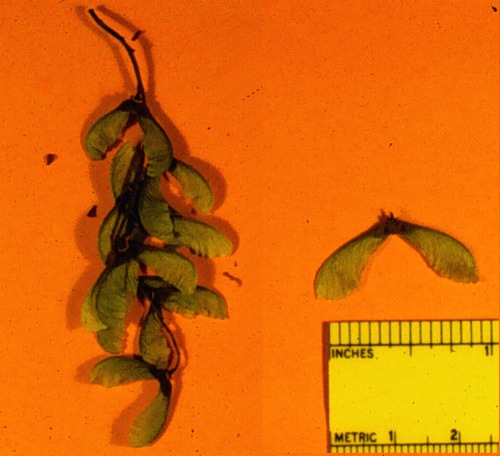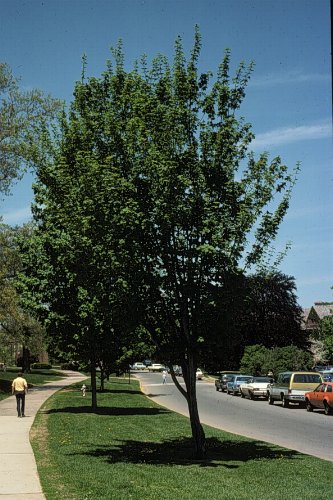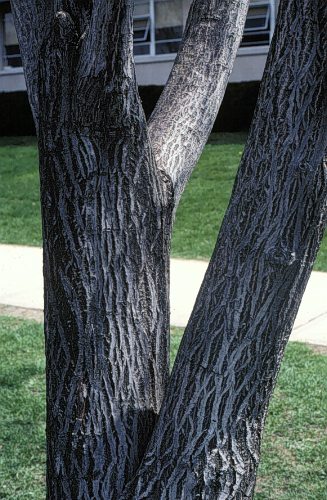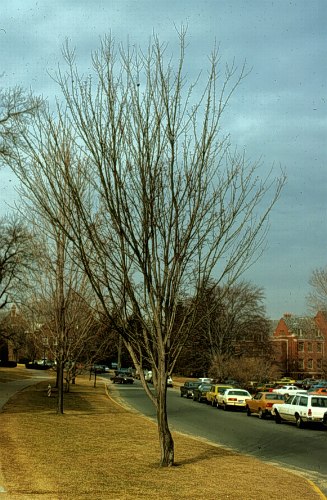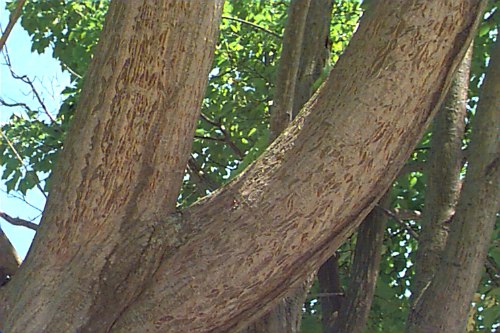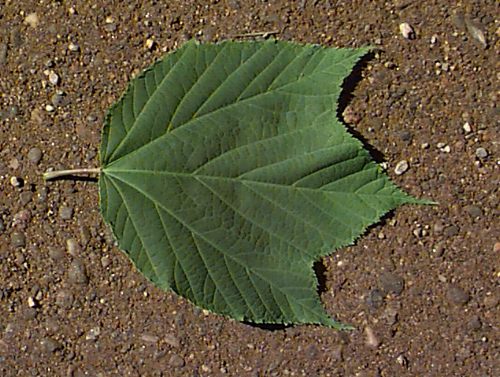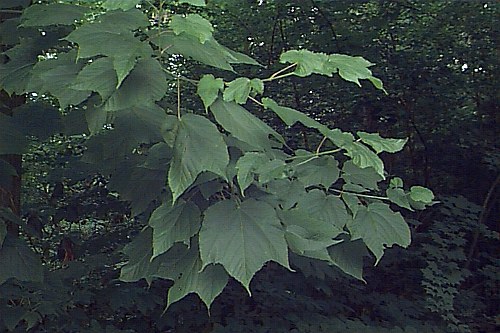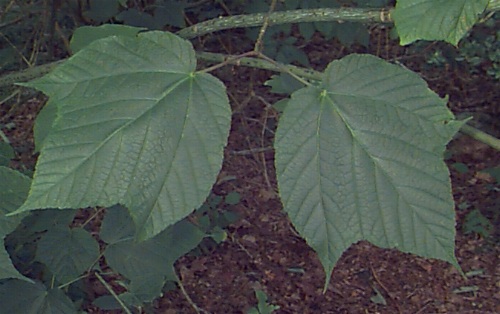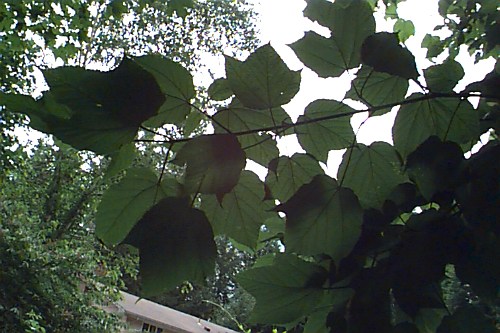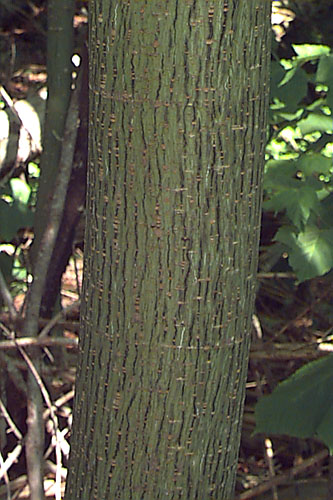Acer pensylvanicum
Striped Maple, Snake Bark Maple
Aceraceae
ExpandHabitat
- native to eastern United States and adjacent Canada
- zone 3
- typical grows as an understory tree in wooded areas
Habit and Form
- a small tree, typically 15' to 20' or taller
- develops a broad, uneven, flat-topped or rounded crown. Often irregular and open
- texture is medium to coarse
- often shrub like in the forest
Summer Foliage
- opposite, 3-lobed at apex
- 5" to 7" long and wide
- bright green
Autumn Foliage
- striking clear yellow; showy
Flowers
- yellow in pendulous chains
- in May
Fruit
- long samaras in pendulous chains
Bark
- young branches longitudinally striped white or green
- showy
Culture
- requires partial shade
- requires cool, moist, slightly acidic soil
- intolerant of pollution, drought, heat
Landscape Uses
- naturalistic planting
- along edge of woods
- specimen (in shade)
Liabilities
- not well suited to typical conditions of cultivation
- don't use unless an appropriate growing site exists
- susceptible to mower injury
- susceptible to canker under stress
ID Features
- terminal bud absent or present
- buds are purplish red and stalked with valvate scales
- striped bark
Propagation
- by seed
Cultivars/Varieties
'Erythrocladum' - An attractive selection that, though difficult to propagate, is available from specialty nurseries and seen in gardens. Young stems assume a bright red coloration after the leaves fall. The effect is very attractive coupled with the white stem striations, making this plant a fine choice for winter interest.
